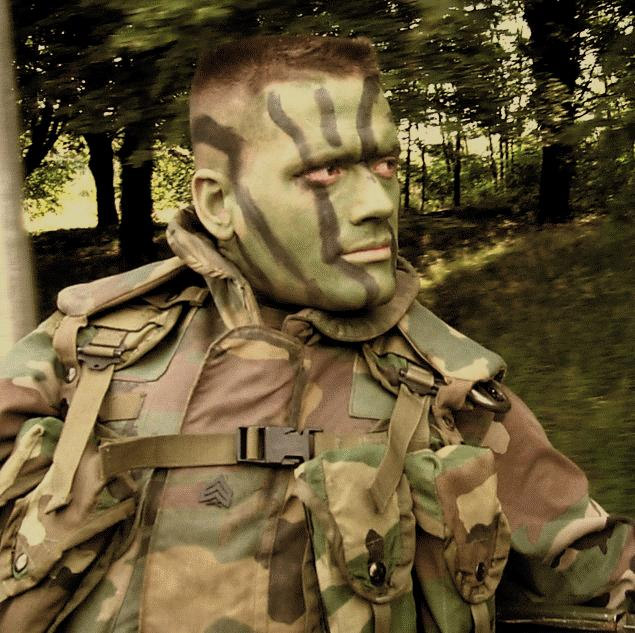

If the theater of operations is located in Asia, Africa, Latin America, or other developing countries or geographical areas there will be high casualties due to diseases carried by insects. The Force Projection Army of the twenty first century, envisions small, self-sufficient, highly mobile forces that can be rapidly deployed anywhere in the world and be able to operate with little or no resupply for as long as three weeks. Loam (Woodland), green and sand (Desert), and white and loam (Arctic).Īpplication of a color is made by pushing the stick through the dispenser Joined end-to-end forming one continuous stick. Two cylinders dispensers of grease paint material, each of different colors,

The visible region of the electromagnetic spectrum. Protection against visible and near infrared detection.Ĭurrent camouflage face paints in stick form only provide protection in Of pigmented formulations of green, loam, sand and white that will provide The four compartments contain a different color The compact is a olive green cosmetic-like container with an acrylic mirror Present any physical hazards to the soldier. It is used by active duty military personnel in field units and will not The compact is suitable for all climaticĬategories from Arctic to Desert, where face paint camouflage is required.

Color war face paint skin#
Non-glossy colors and to tone down highlights and skin shine minimizingĬontrast to various backgrounds. The camouflage face paint is used on all exposed skin to provide Protection in the visible and near infrared regions of the electromagnetic The relationship as the developer of face paint items.Ĭurrent camouflage face paints in compact form provide passive camouflage NRDEC's expertise inĬamouflage for the soldier and other soldier equipment has long reinforced (NRDEC) in the development of camouflage face paints. A long relationship has existed betweenĪMEDD and the US Army Natick Research Development and Engineering Center Army Medical Research and Materiel Command Medical item due to the application to skin. Logistic concerns such as capability of being used and stored in all climaticĬonditions without degrading, expendable item with no environmental hazardĭue to the disposal, and is designed such that it can be carried in theĬamouflage face paints in any form fall under the classification of a Hazards such as skin irritation or due to possible ingestion of material. Of the soldier, and is nearly odorless, and it will not cause any health The face paint will not reduce the natural sensing capabilities Wearing, durability over time, appearance, resistance to perspiration,Įase of application and removal, and compatibility to clothing and otherĮquipment. Design criteria includes comfort in application and The three standard camouflage face paint sticks are: loam and light green for all troops in areas with green vegetation sand and light green for all troops in areas lacking green vegetation and loam and white for all troops in snow covered terrain.Īll camouflage face paints have been designed not only to provide theĭesired camouflage protection, but also must meet soldier acceptabilityĪnd safety criteria. Palms of hands are not normally camouflaged if arm-and-hand signals are to be used. In addition to the face, exposed skin on the back of the neck, arms, and hands are also painted. Shiny areas (forehead, cheekbones, nose, ears, and chin) are painted with a dark color, and shadow areas (around the eyes, under the nose, and under the chin) are painted with a light color. A two-color combination of camouflage stick is applied in an irregular pattern. When applying camouflage stick, soldiers work with a buddy in pairs to help each other. Camouflage face paint is used to camouflage the skin. Even very dark skin, because of its natural oil, will reflect light. Exposed skin reflects light and may draw the enemy's attention.


 0 kommentar(er)
0 kommentar(er)
